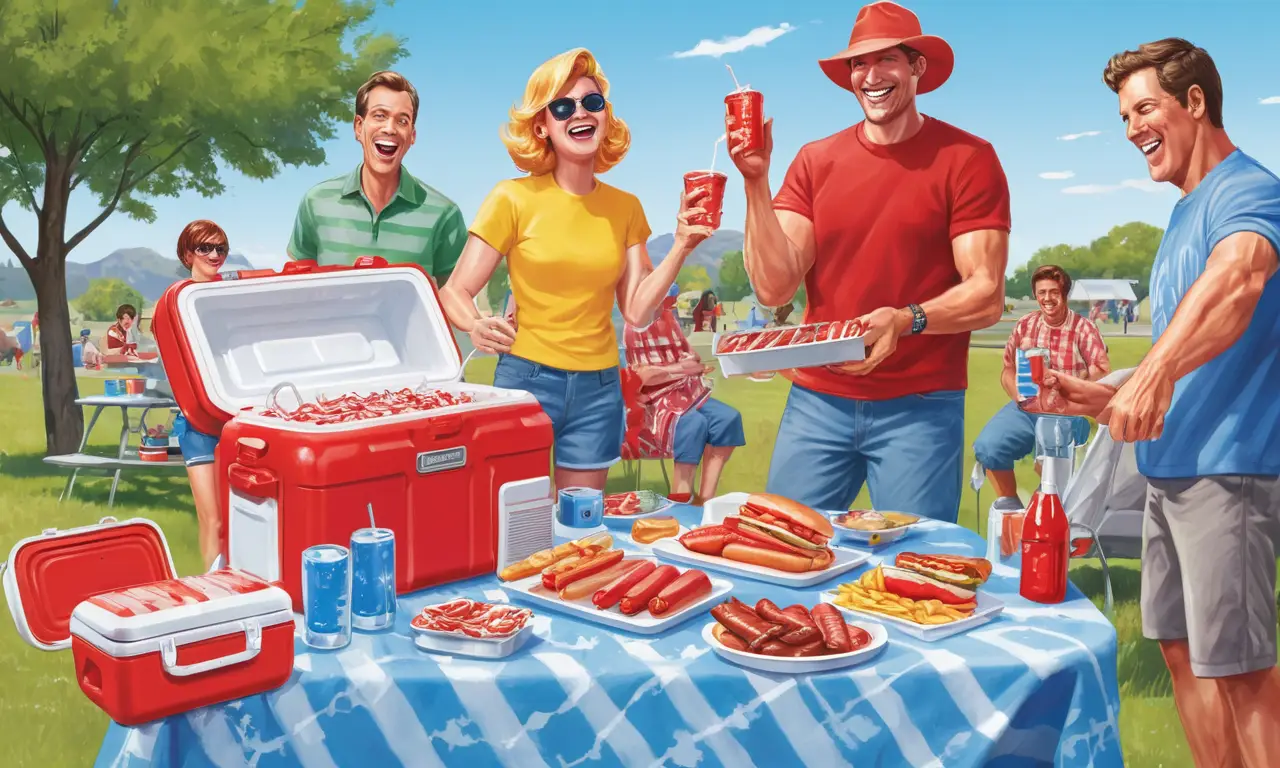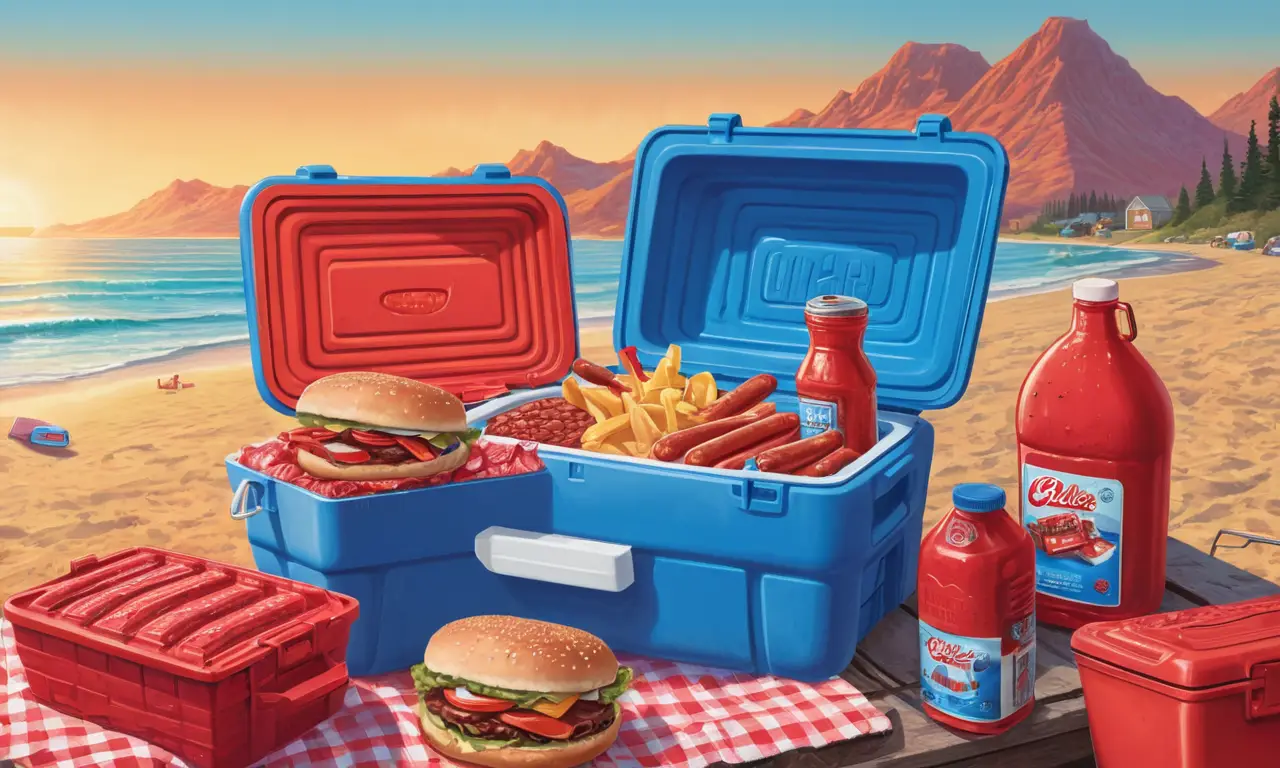
Keeping your drinks and food cold on a hot day can be crucial, but choosing between a cooler and an ice chest might leave you scratching your head. While these terms are often used interchangeably, there are subtle differences that can impact your decision. A cooler typically refers to a larger, more robust container designed for extended periods of temperature control, perfect for camping trips or tailgating parties. An ice chest, on the other hand, usually implies a smaller, portable option ideal for day trips, picnics, or beach outings. Both utilize ice packs or blocks to maintain coolness, but their size, features, and intended use vary significantly.
This article will delve into the nuances of coolers and ice chests, exploring their distinct features and helping you determine which one best suits your needs. We’ll cover factors like size, insulation, portability, and specific functionalities to ensure you make an informed choice for your next outdoor adventure.
Cooler vs. Ice Chest
The primary distinction between a cooler and an ice chest lies in their intended use and size. Coolers are generally larger and more robustly built, designed to maintain temperatures for extended periods, often several days. They typically feature thicker insulation, stronger latches, and sometimes even wheels or handles for easier transport.
Ice chests, conversely, are smaller and lighter, prioritizing portability over long-term temperature control. They’re perfect for short outings where keeping drinks and snacks chilled for a few hours is sufficient. While they may not offer the same level of insulation as coolers, they’re still effective for maintaining coolness during day trips or picnics.
Cooler Features

Coolers are packed with features designed to keep your contents cold for extended periods.
Insulation:
High-density foam insulation is a key feature of most coolers, acting as a barrier against heat transfer. The thicker the insulation, the better it performs at maintaining low temperatures. Some high-end coolers even incorporate multiple layers of insulation for superior performance.
Locking Mechanisms:
Secure latches and hinges are essential for keeping your cooler tightly sealed and preventing accidental openings. Many coolers feature robust locking mechanisms that ensure your contents remain secure during transport or storage.
Wheels and Handles:
Larger coolers often come equipped with wheels and telescoping handles, making them easier to maneuver over rough terrain or long distances. This is particularly helpful when transporting heavy loads of ice and food.
Additional Features:
Some coolers offer additional features like built-in bottle openers, cup holders, removable dividers, and even drain plugs for easy cleaning. These extras can enhance convenience and functionality depending on your needs.
Ice Chest Features
Ice chests prioritize portability and affordability while still offering effective cooling capabilities for shorter durations.
Compact Design:
Ice chests are typically smaller and lighter than coolers, making them ideal for carrying on day trips or picnics. Their compact size allows for easy storage in vehicles or backpacks.
Simple Construction:
Ice chests often feature a simpler construction compared to coolers, with less emphasis on complex insulation layers or locking mechanisms. This contributes to their affordability and lightweight design.
Carry Handles:
Most ice chests come equipped with sturdy carry handles for easy transportation. Some models may also include shoulder straps for added comfort during longer walks.
Variety of Sizes:
Ice chests are available in a range of sizes to suit different needs, from small personal coolers to larger options suitable for group outings.
Choosing the Right Option

Selecting the right cooler vs. ice chest depends on your specific requirements and the duration of your outing.
Consider these factors when making your decision:
- Duration: For extended trips or events lasting several days, a cooler is essential for maintaining consistent temperatures. For shorter outings like picnics or day trips, an ice chest will suffice.
- Capacity: Determine how much food and drinks you need to keep cold. Choose a cooler with ample capacity if you’re packing for a large group or multi-day trip. An ice chest is sufficient for smaller gatherings or individual needs.
- Portability: If you’ll be transporting your cooler over long distances or rough terrain, prioritize models with wheels and handles. For shorter walks or car trips, an ice chest‘s lightweight design may be more convenient.
Temperature Management
Both coolers and ice chests rely on ice packs or blocks to maintain coolness.
- Ice Packs: Reusable gel packs are a popular choice for both coolers and ice chests. They can be frozen beforehand and provide consistent cooling for several hours.
- Ice Blocks: Traditional ice blocks offer excellent cooling power but melt faster than ice packs. Consider using a combination of ice packs and blocks for optimal temperature control.
To maximize the effectiveness of your chosen cooling method:
- Pre-chill your cooler or ice chest by placing frozen water bottles or ice packs inside before adding food and drinks.
- Avoid opening the lid frequently, as this allows warm air to enter and disrupt the cold environment.
- Store your cooler or ice chest in a shaded area to minimize exposure to direct sunlight.
Conclusion
Choosing between a cooler and an ice chest ultimately depends on your individual needs and the nature of your outing. Coolers excel at maintaining temperatures for extended periods, making them ideal for camping trips, tailgating parties, or multi-day adventures. Ice chests prioritize portability and affordability, perfect for day trips, picnics, or short outings where keeping drinks and snacks chilled for a few hours is sufficient. By considering factors like size, insulation, features, and intended use, you can select the right option to ensure your food and beverages stay refreshingly cold throughout your next adventure.
